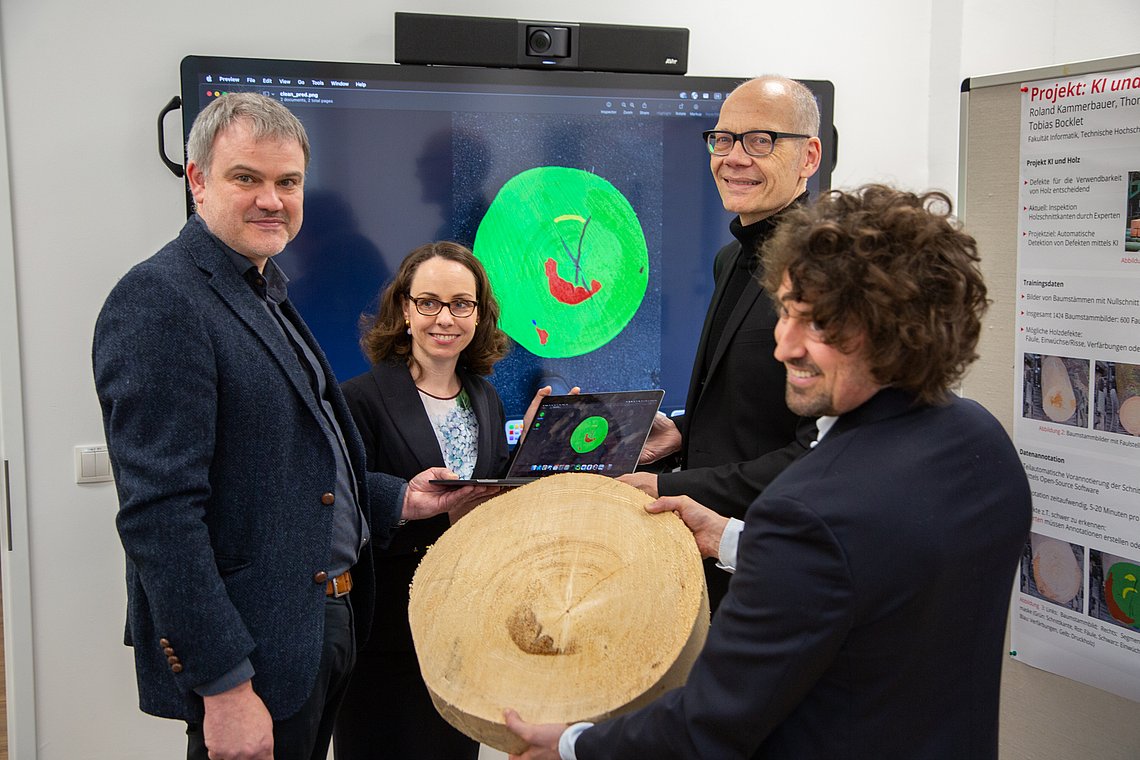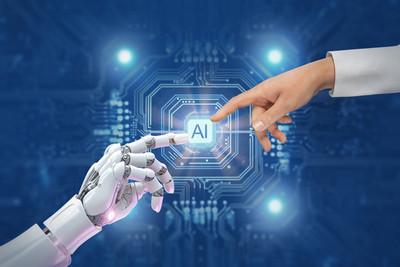Centre for Artificial Intelligence at the Ohm
How can AI be integrated into the day-to-day work of SMEs? This is what the KIZ at the Ohm is investigating.
Artificial intelligence (AI) is currently on everyone's lips. However, companies, especially SMEs, often do not yet know exactly what advantages the new technology can offer them. The Centre for Artificial Intelligence at Technische Hochschule Nürnberg Georg Simon Ohm (Ohm) has been working for several years on integrating AI into the day-to-day work of SMEs.
Data is key
Prof. Dr Tobias Bocklet, Prof. Dr Korbinian Riedhammer and their team from the Centre for Artificial Intelligence (KIZ) at the Ohm collect and analyse data in the everyday life of small and medium-sized enterprises in order to simplify production processes - both in the skilled trades and in industrial mass production. This enables predictive maintenance of machines as well as sustainable and efficient production.
"The use of AI is already a decisive factor for the competitiveness of SMEs and craft businesses, and its importance will continue to grow," says Ohm President Prof Dr Niels Oberbeck. "Our role as a university of applied sciences is to make the technological possibilities and current research findings of AI accessible to small and medium-sized enterprises in a lively network. The close collaboration between business and science is important in order to fully utilise the opportunities of the digital transformation."
Dr Andrea Heilmaier, professional city councillor and business and science officer for the City of Nuremberg, says: "Nuremberg is a hotspot for artificial intelligence. A great deal of research and development expertise has emerged locally in this field in recent years. The topic is of immense importance for the future strength of Nuremberg as a centre of research and business. I therefore very much welcome the fact that the Ohm is being developed into one of five new AI regional centres in order to provide local SMEs and trades with the support they need."
AI in the innovation ecosystem of the Nuremberg Metropolitan Region
Another building block is the "Digital Intelligence" Technology Transfer Centre (TTZ) in Kronach. Here, scientists have the opportunity to deepen their research in the field of applied AI and actively promote technology transfer to the Upper Franconian corporate landscape. Together with small and medium-sized regional companies, they research and develop the potential applications of AI in everyday working life. "We use our expertise to visit the companies on site and analyse existing or accumulating data. This can be images, texts or process data from machines. We then try to analyse these using AI and implement them directly in prototypes," explains AI expert Bocklet. SMEs are thus clearly shown how much they can benefit from AI and how employees can make an active contribution to the digital transformation.
How much AI is in a bun?
For example, bakeries are supported in recording returns of their baked goods: The so-called "bun detector" records and classifies buns using AI. The data is based on 1,000 images of individual baked goods. AI detection relieves the workload on labour, reduces waste and increases resource efficiency. The KIZ also supports a sawmill with a similar principle: until now, the quality of the wood was checked with the naked eye before processing. In future, an AI system will be able to help determine the rot content of the wood more quickly, reliably and objectively. However, AI models can also be used profitably in the health sector, for example in speech-based early detection of dementia.
The examples illustrate that AI applications can also be integrated into the everyday life of small and medium-sized companies. The support provided by the AI researchers at the Ohm makes it possible to assist companies with the use of new technologies alongside their day-to-day business.

© Matthias Wiedmann



